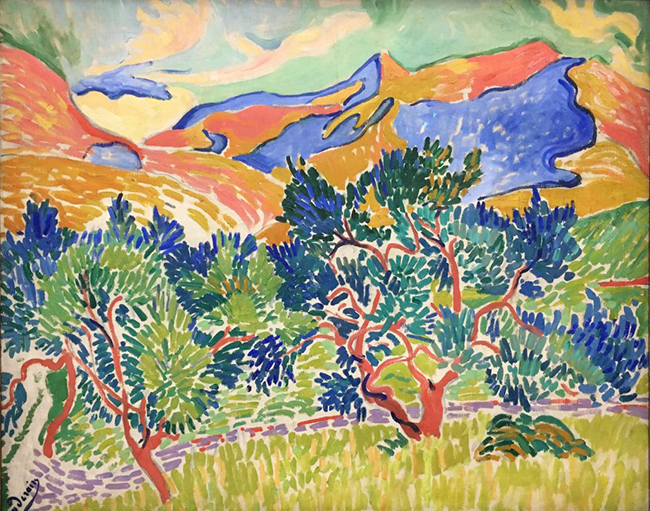André Derain, “Mountains at Collioure”, 1905
Mountains at Collioure was painted by André Derain, a French artist and co-founder of Fauvism with Henri Mattisse.
Derain used a unique pattern of brushstroke to paint the landscape of mountains with leaves, grass, and river. Vivid blue, green, red, and yellow dominate this painting. The landscape under the calm blue and green sky are so relaxing to our eyes.
In the summer of 1905, Derain and Matisse were going to south France to made paintings. One of the results was Derain’s Collioure. Mountains at Collioure is a perfect prototype of a Fauvism landscape that is characterized by “strong colors and fierce brushwork”.
Fauvism comes from les fauves which means ‘the wild beasts’. The term ‘Fauve’ was coined by Louis Vauxcelles, a French art critic. He was amazed by the wild loose dabs in Derain’s and Matisse’s paintings. Both Derain and Matisse reject the traditional three-dimensional space in painting. They build pictorial space through the patches of color.
Fauvism then inspires other future artists, especially the avant-garde movement that emphasizes freedom of expression in colors and shapes.

